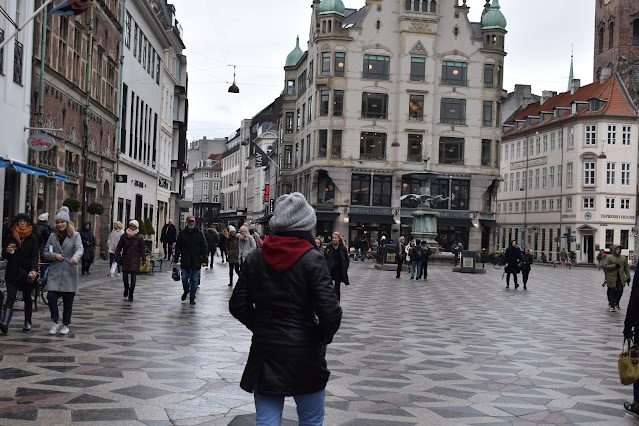PLACE ATTACHEMENT IN PUBLIC SPACES
PLACE ATTACHEMENT IN PUBLIC SPACES
The longing for social cohesion is a very important part of our evolutionary process
which extends to us as humans and to our close environment. Nowadays, as a result
of the increasing migration, people suffer sudden disruptions from their familiar
environment. The integration in a new country is a slow process but with the help of
the place attachment approach, some solutions might be found. This approach
represents the connection between person and place and the cognitive processes
that develop with it.
Immigration is a worldwide phenomenon nowadays. People relocate to different countries for various reasons. Some chose to move to another state because they are searching for better opportunities or just because they are willing to change their lifestyle. But there are also those that are forced to move, those that are persecuted (religious and otherwise) or abused during civil wars (Borjas, 1982). For instance, people emigrate in order to escape from something that endangers their well-being and not just because they want a wealthy lifestyle, (Kislev & Elyakim, 2014). Statistics show that worldwide is an estimated number of 244 million immigrants, and nearly two-thirds are living in Europe – 76 million (United Nations database, Rev.2015). The developed European countries are becoming very multicultural but the immigration policies vary from state to state. When fleeing their country and moving to a new one, immigrants, more specifically refugees, are usually forced to leave behind their familiar environment and to face multiple uncertainties such as new cultural norms, different language, maybe racism or other exclusionary behaviors (Nunez, 2014). The host countries are usually willing to solve these problems with several initiatives meant to advance the integration process of newly arrived immigrants in their societies. Therefore, the immigrants are helped to get access to education, housing and jobs, but the sense of belonging and inclusion in the new place is still lacking for them.
Studies show that the feeling of attachment to the new place and the social cohesion can be achieved by the immigrants when using the public space in the new host city (Jay & Schraml, 2009; Leikkilä et al., 2013; Peters et al., 2010). Simultaneously, the absence of attachment to local surroundings mixed with the feeling of discrimination can generate the impression of un-belonging (Neal & Agyeman, 2006).
The place attachment approach can help us to explain the anxiety and the discomfort felt by the people that are forced to relocate in another environment (Fried, 1963; Fullilove, 1996). The attachment theory emphasizes the longing for social cohesion as an intrinsic part of our evolutionary process that extends to us as humans and to our close environment (Ecke et al., 2005) and the statement is based on Bowlby‘s book, where he writes that "There is a marked tendency for humans, like animals of other species to remain in a particular and familiar locale and in the company of particular and familiar people" (1973, p. 147). It is clear that immigrants, both those that chose to immigrate and especially those that are forced, suffer a disruption in the person - place connection (Anthony, 1984; Fried, 1963; Matter & Matter, 1988) and that is why it is important to find out if the fundamental feeling of place attachment can develop again in a new place.
The literature emphasize that place attachment is the result of the connection between individual experiences, ambitions, psychological background and the existing environment (Hashemnezhad et al., 2013). From this statement it is easy to understand that if people lose their familiar place they might lose their identity. This problem is also discussed by Schwarz, Brenth, Philips, and Danley (1995) and they base their research on the Eric Fromm quote: "If I am what I have and what I have is lost, who then am I?" (Eric Fromm, 1976, p. 96). According to this quote, the people which are forced to leave behind their homes need to regain the feeling of place attachment in the new environment; otherwise they can lose their identity. The problem is that it might be difficult for people to adapt to places that do not uphold their culture and values (Altman & Gauvain, 1981). Brown and Perkins also specify that "Place attachments develop slowly but can be disrupted quickly and can create a long-term phase of dealing with the loss and repairing or re-creating attachments to people and places.‘‘ (1992, p. 284). One solution, debated in the literature is the use of public space by the immigrants. The public space is important because it is accessible to everybody and that is why it is usually chosen for the social interaction between persons of different ethnic backgrounds (Lofland, 1998; Fainstein, 2005). The physical parameters which affect the feeling of place attachment are introduced by Steele (1981) as proportion, scale, diversity, texture, color, smell, noise, and temperature. He also explains that the identity, the history, the mystery, the pleasance and the security of a place have an effect on the way people connect with it (Steele, 1981). Steele‘s statement is strengthened by Michael Southworth, who says that the components of a qualitative place are form, vistas, scale and structure (1989).
In conclusion, the existing literature shows that the public space has the potential to increase the feeling of place attachment and if it is designed with all the necessary qualities it can become a preferred place for people that had suffered a sudden and unwanted transition.
Anamaria Panaite-Bondre



Comments
Post a Comment